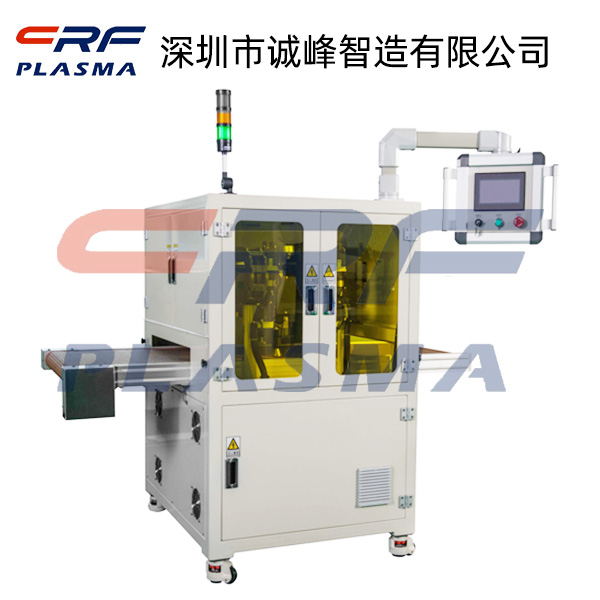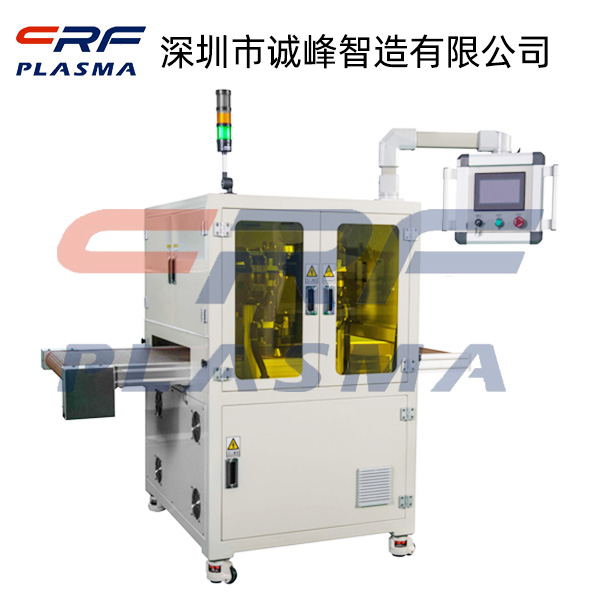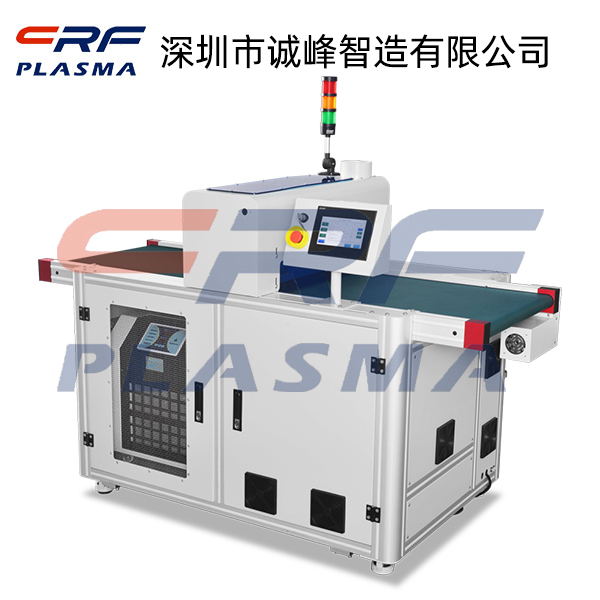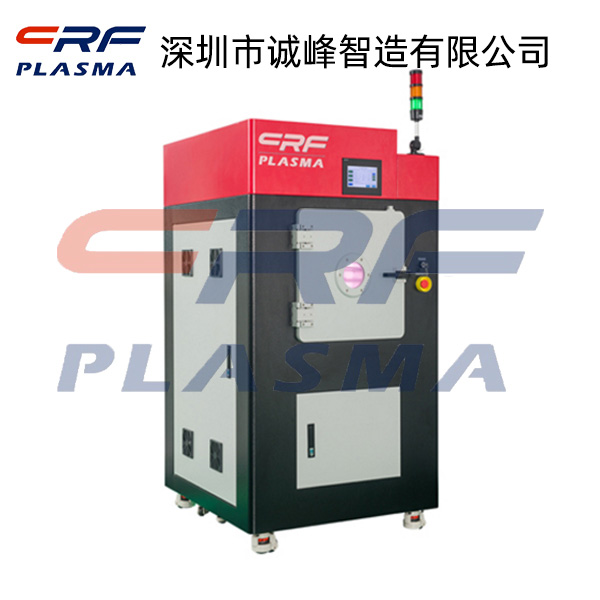
Welcome to Shenzhen Sing Fung Intelligent Manufacturing Co., Ltd.
E-mail:shaobo@sfi-crf.com
Low-temperature plasma treatment makes difficult-to-stick plastics no longer difficult, and Chengfeng Zhizhi is the trusted choice
- Categories:Technical Support
- Author:Plasma cleaning machine-CRF plasma plasma equipment-plasma surface treatment machine manufacturer-chengfeng intelligent manufacturing
- Origin:
- Time of issue:2021-06-24
- Views:
(Summary description)Plasma is composed of electrons, positive ions and neutral particles (including all uncharged particles, such as atoms, molecules and atomic groups, etc.), an ionized gas that is neutral to the outside world. Plasma is called the fourth state in which matter exists in addition to solid, liquid and gaseous states. There are four main forms of low-temperature plasma treatment. Low-temperature plasma treatment of plastics 1. Surface etching Under the action of plasma, some chemical bonds on the surface of the material are broken, forming small molecular products or being oxidized to CO, CO2, etc. These products are pumped away by the pumping process, making the surface of the material uneven and increasing the roughness. 2. Surface activation Under the action of low-temperature plasma treatment, some active atoms, free radicals and unsaturated bonds appear on the surface of hard-to-stick plastics. These active groups will react with active particles in the plasma to generate new active groups. However, materials with active groups will be affected by the action of oxygen or the movement of molecular chains, which will cause the surface active groups to disappear. Therefore, the surface activity of plasma-treated materials has a certain time effect. 3. Surface grafting In the surface modification of materials by plasma, due to the effect of active particles on the surface molecules in the plasma, the surface molecular chains are broken to generate new free radicals, double bonds and other active groups, and surface cross-linking, grafting, etc. occur. reaction. 4. Surface polymerization When using organic fluorine, organic silicon or organic metal as plasma active gas, low-temperature plasma treatment will polymerize and produce a deposition layer on the surface of the material. The existence of the deposition layer is beneficial to improve the bonding ability of the material surface. Non-stick plastics mainly refer to polyolefins such as polyethylene (PE) and polypropylene (PP) and fluorine-containing plastics such as polytetrafluoroethylene (PTFE) and perfluoroethylene propylene (FEP). This type of plastic usually has advantages that other polymer materials do not have. Polyolefin plastics such as PE are low in cost, excellent in performance, and easy to process into various profiles, so they are widely used in daily life; and PTFE, commonly known as the plastic king, is a plastic with very good comprehensive properties and has excellent heat resistance. , Cold resistance and chemical resistance, it is widely used in the electronics industry and some cutting-edge fields. Why is hard-to-stick plastic so hard to stick? 1.1 Low surface energy and poor wetting ability The basic condition for forming a bonding state between the surface of any material and the adhesive is that a thermodynamic bonding state must be formed. It depends on the degree of wetting (contact angle) between the surface of the material and the adhesive, the surface tension of the adhered material, the surface tension of the adhesive, and the surface tension between the adhered material and the adhesive. The surface energy of hard-to-stick plastics is relatively low, so its wetting ability is poor. 1.2 High crystallinity The molecular chains of difficult-to-stick plastics have regular structure, high crystallinity, and good chemical stability. Their swelling and dissolution are more difficult than non-crystalline polymers. When bonded with solvent-based adhesives, it is difficult to diffuse polymer molecular chains. And entangled with each other and cannot form a strong adhesion force. 1.3 The molecular chain is non-polar PE molecular chain does not have any polar groups and is a non-polar polymer; PP molecular structure unit has -CH3, but -CHs is a very weak polar group, so PP is basically a non-polar polymer; PTFE Fluoroplastics are also non-polar polymers due to their highly symmetrical structure. Adhesives adsorbed on the surface of these difficult-to-stick plastics can only form a weak dispersion force, but lack the orientation and induction force, so the adhesion performance is poor. 1.4 There is a weak boundary layer In addition to structural reasons that difficult-to-stick plastics are difficult to stick, they also lie in the presence of a weak boundary layer on the surface of the material. This weak boundary layer comes from the low-molecular components of the polymer itself, various additives added during the polymerization process, as well as human impurities during processing, storage and transportation. Such small molecular substances are very easy to precipitate and collect on the surface of the plastic, forming a weak interface layer with very low strength. The existence of this weak boundary layer greatly reduces the bonding strength of the plastic. Low-temperature plasma treatment surfac
Low-temperature plasma treatment makes difficult-to-stick plastics no longer difficult, and Chengfeng Zhizhi is the trusted choice
(Summary description)Plasma is composed of electrons, positive ions and neutral particles (including all uncharged particles, such as atoms, molecules and atomic groups, etc.), an ionized gas that is neutral to the outside world. Plasma is called the fourth state in which matter exists in addition to solid, liquid and gaseous states. There are four main forms of low-temperature plasma treatment.
Low-temperature plasma treatment of plastics
1. Surface etching
Under the action of plasma, some chemical bonds on the surface of the material are broken, forming small molecular products or being oxidized to CO, CO2, etc. These products are pumped away by the pumping process, making the surface of the material uneven and increasing the roughness.
2. Surface activation
Under the action of low-temperature plasma treatment, some active atoms, free radicals and unsaturated bonds appear on the surface of hard-to-stick plastics. These active groups will react with active particles in the plasma to generate new active groups. However, materials with active groups will be affected by the action of oxygen or the movement of molecular chains, which will cause the surface active groups to disappear. Therefore, the surface activity of plasma-treated materials has a certain time effect.
3. Surface grafting
In the surface modification of materials by plasma, due to the effect of active particles on the surface molecules in the plasma, the surface molecular chains are broken to generate new free radicals, double bonds and other active groups, and surface cross-linking, grafting, etc. occur. reaction.
4. Surface polymerization
When using organic fluorine, organic silicon or organic metal as plasma active gas, low-temperature plasma treatment will polymerize and produce a deposition layer on the surface of the material. The existence of the deposition layer is beneficial to improve the bonding ability of the material surface.
Non-stick plastics mainly refer to polyolefins such as polyethylene (PE) and polypropylene (PP) and fluorine-containing plastics such as polytetrafluoroethylene (PTFE) and perfluoroethylene propylene (FEP). This type of plastic usually has advantages that other polymer materials do not have. Polyolefin plastics such as PE are low in cost, excellent in performance, and easy to process into various profiles, so they are widely used in daily life; and PTFE, commonly known as the plastic king, is a plastic with very good comprehensive properties and has excellent heat resistance. , Cold resistance and chemical resistance, it is widely used in the electronics industry and some cutting-edge fields.
Why is hard-to-stick plastic so hard to stick?
1.1 Low surface energy and poor wetting ability
The basic condition for forming a bonding state between the surface of any material and the adhesive is that a thermodynamic bonding state must be formed. It depends on the degree of wetting (contact angle) between the surface of the material and the adhesive, the surface tension of the adhered material, the surface tension of the adhesive, and the surface tension between the adhered material and the adhesive. The surface energy of hard-to-stick plastics is relatively low, so its wetting ability is poor.
1.2 High crystallinity
The molecular chains of difficult-to-stick plastics have regular structure, high crystallinity, and good chemical stability. Their swelling and dissolution are more difficult than non-crystalline polymers. When bonded with solvent-based adhesives, it is difficult to diffuse polymer molecular chains. And entangled with each other and cannot form a strong adhesion force.
1.3 The molecular chain is non-polar
PE molecular chain does not have any polar groups and is a non-polar polymer; PP molecular structure unit has -CH3, but -CHs is a very weak polar group, so PP is basically a non-polar polymer; PTFE Fluoroplastics are also non-polar polymers due to their highly symmetrical structure. Adhesives adsorbed on the surface of these difficult-to-stick plastics can only form a weak dispersion force, but lack the orientation and induction force, so the adhesion performance is poor.
1.4 There is a weak boundary layer
In addition to structural reasons that difficult-to-stick plastics are difficult to stick, they also lie in the presence of a weak boundary layer on the surface of the material. This weak boundary layer comes from the low-molecular components of the polymer itself, various additives added during the polymerization process, as well as human impurities during processing, storage and transportation.
Such small molecular substances are very easy to precipitate and collect on the surface of the plastic, forming a weak interface layer with very low strength. The existence of this weak boundary layer greatly reduces the bonding strength of the plastic.
Low-temperature plasma treatment surfac
- Categories:Technical Support
- Author:Plasma cleaning machine-CRF plasma plasma equipment-plasma surface treatment machine manufacturer-chengfeng intelligent manufacturing
- Origin:
- Time of issue:2021-06-24 18:21
- Views:
Plasma is composed of electrons, positive ions and neutral particles (including all uncharged particles, such as atoms, molecules and atomic groups, etc.), an ionized gas that is neutral to the outside world. Plasma is called the fourth state in which matter exists in addition to solid, liquid and gaseous states. There are four main forms of low-temperature plasma treatment.

Low-temperature plasma treatment of plastics
1. Surface etching
Under the action of plasma, some chemical bonds on the surface of the material are broken, forming small molecular products or being oxidized to CO, CO2, etc. These products are pumped away by the pumping process, making the surface of the material uneven and increasing the roughness.
2. Surface activation
Under the action of low-temperature plasma treatment, some active atoms, free radicals and unsaturated bonds appear on the surface of hard-to-stick plastics. These active groups will react with active particles in the plasma to generate new active groups. However, materials with active groups will be affected by the action of oxygen or the movement of molecular chains, which will cause the surface active groups to disappear. Therefore, the surface activity of plasma-treated materials has a certain time effect.
3. Surface grafting
In the surface modification of materials by plasma, due to the effect of active particles on the surface molecules in the plasma, the surface molecular chains are broken to generate new free radicals, double bonds and other active groups, and surface cross-linking, grafting, etc. occur. reaction.
4. Surface polymerization
When using organic fluorine, organic silicon or organic metal as plasma active gas, low-temperature plasma treatment will polymerize and produce a deposition layer on the surface of the material. The existence of the deposition layer is beneficial to improve the bonding ability of the material surface.
Non-stick plastics mainly refer to polyolefins such as polyethylene (PE) and polypropylene (PP) and fluorine-containing plastics such as polytetrafluoroethylene (PTFE) and perfluoroethylene propylene (FEP). This type of plastic usually has advantages that other polymer materials do not have. Polyolefin plastics such as PE are low in cost, excellent in performance, and easy to process into various profiles, so they are widely used in daily life; and PTFE, commonly known as the plastic king, is a plastic with very good comprehensive properties and has excellent heat resistance. , Cold resistance and chemical resistance, it is widely used in the electronics industry and some cutting-edge fields.
Why is hard-to-stick plastic so hard to stick?
1.1 Low surface energy and poor wetting ability
The basic condition for forming a bonding state between the surface of any material and the adhesive is that a thermodynamic bonding state must be formed. It depends on the degree of wetting (contact angle) between the surface of the material and the adhesive, the surface tension of the adhered material, the surface tension of the adhesive, and the surface tension between the adhered material and the adhesive. The surface energy of hard-to-stick plastics is relatively low, so its wetting ability is poor.
1.2 High crystallinity
The molecular chains of difficult-to-stick plastics have regular structure, high crystallinity, and good chemical stability. Their swelling and dissolution are more difficult than non-crystalline polymers. When bonded with solvent-based adhesives, it is difficult to diffuse polymer molecular chains. And entangled with each other and cannot form a strong adhesion force.
1.3 The molecular chain is non-polar
PE molecular chain does not have any polar groups and is a non-polar polymer; PP molecular structure unit has -CH3, but -CHs is a very weak polar group, so PP is basically a non-polar polymer; PTFE Fluoroplastics are also non-polar polymers due to their highly symmetrical structure. Adhesives adsorbed on the surface of these difficult-to-stick plastics can only form a weak dispersion force, but lack the orientation and induction force, so the adhesion performance is poor.
1.4 There is a weak boundary layer
In addition to structural reasons that difficult-to-stick plastics are difficult to stick, they also lie in the presence of a weak boundary layer on the surface of the material. This weak boundary layer comes from the low-molecular components of the polymer itself, various additives added during the polymerization process, as well as human impurities during processing, storage and transportation.
Such small molecular substances are very easy to precipitate and collect on the surface of the plastic, forming a weak interface layer with very low strength. The existence of this weak boundary layer greatly reduces the bonding strength of the plastic.
Low-temperature plasma treatment surface activation modification can effectively improve the adhesion problems of difficult-to-stick plastics, and provide plasma technology solutions for solving industry application problems. You deserve it!
Scan the QR code to read on your phone

TEL:0755-3367 3020 / 0755-3367 3019

E-mail:sales-sfi@sfi-crf.com

ADD:Mabao Industrial Zone, Huangpu, Baoan District, Shenzhen
















